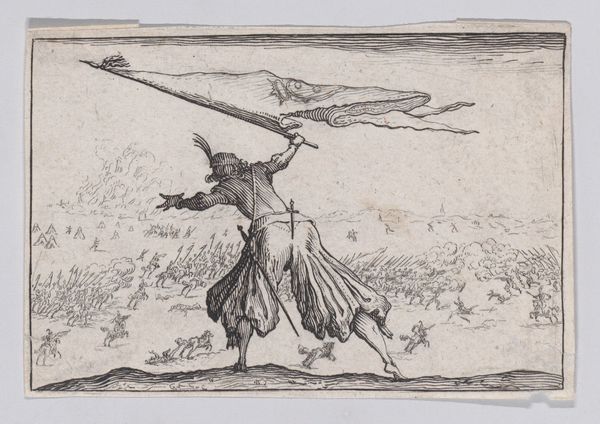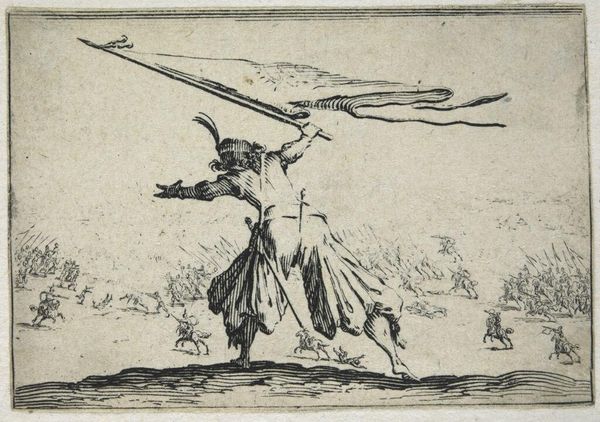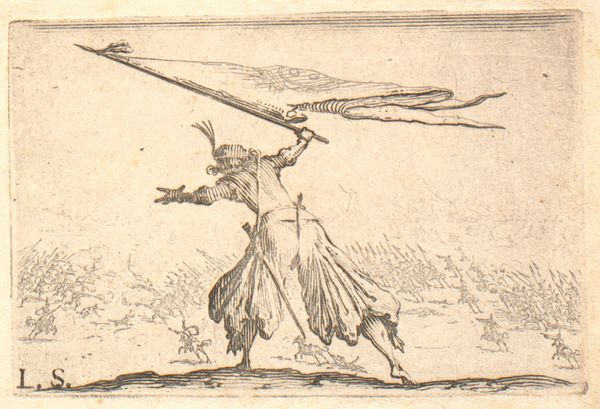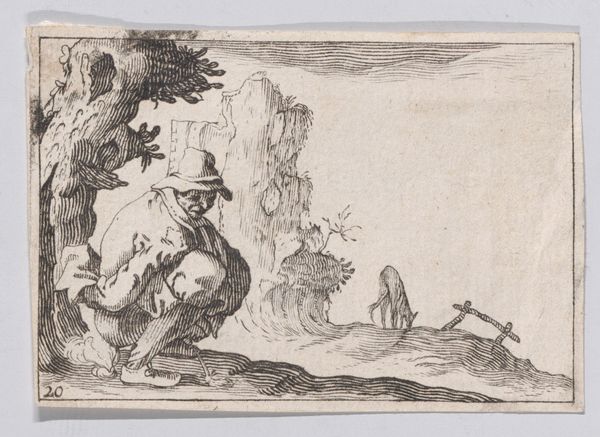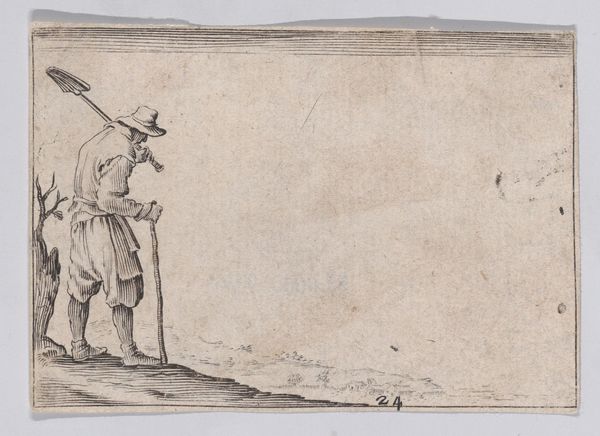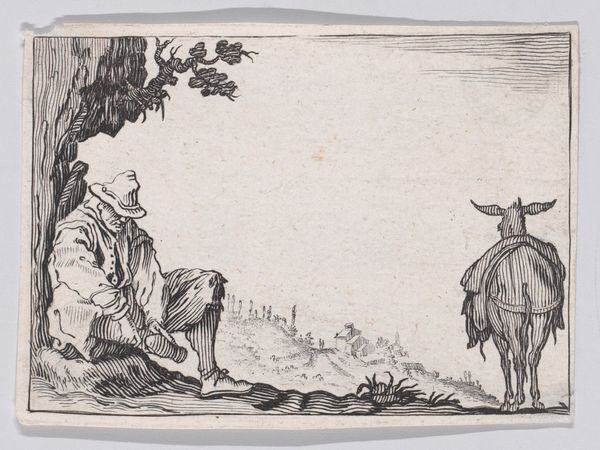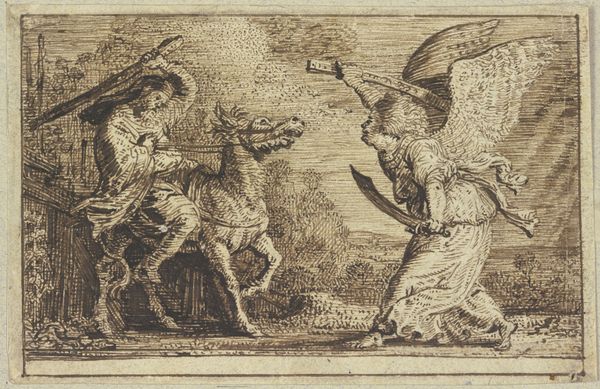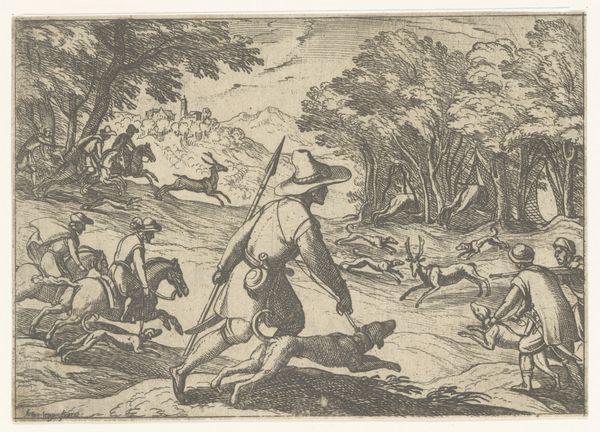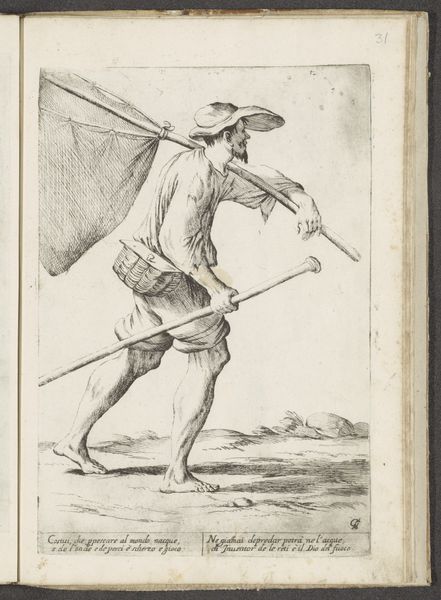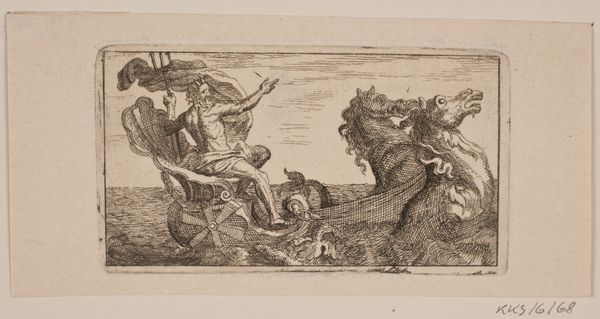
Reverse Copy of Le Porte-Étendard (The Standard Bearer), from Les Caprices 1620 - 1700
0:00
0:00
drawing, print, etching
#
drawing
#
narrative-art
#
baroque
# print
#
etching
#
figuration
#
line
#
history-painting
Dimensions: Sheet: 2 1/16 x 3 1/4 in. (5.2 x 8.2 cm)
Copyright: Public Domain
Curator: This etching is called "Reverse Copy of Le Porte-Étendard (The Standard Bearer), from Les Caprices." It's an anonymous work, dating sometime between 1620 and 1700, and currently residing here at the Met. What's your initial impression? Editor: Immediate sense of chaos and precarious balance. Look at that standard bearer, caught mid-stride! And is he...barefoot? It’s a very raw and energetic composition despite being a small print. Curator: It is compelling, isn't it? Think about the broader context: these prints, often circulated among the burgeoning middle class, disseminated imagery of power and military prowess but also of the brutalities of war to a wider audience than ever before. This circulation was both informative and, one could argue, a form of propaganda. Editor: Precisely. The means of reproduction really shift the social dynamics. The very lines etched into the metal plate become a record of labour. The crosshatching suggests the figure is straining against some wind, adding to that sense of dynamism and tension created by the action being on full display, not really composed. It almost makes one want to check how clean are the edges of the print as opposed to appreciating this character! Curator: That rawness is what grabs you, yes? Well, even copies held their value in these narratives: observe the chaotic battle unfolding behind the standard bearer, almost as if he is attempting to quell this unrest. The original work may have had an intention or political viewpoint, and its copy may inadvertently amplify a different one because of shifting social climates during their periods. Editor: Absolutely. I am now wondering about what kind of material and labor was put in creating the original etching plates and about the workshop this was made in, whether the artist was working alone or under a benefactor. But even more fundamentally, in viewing copies versus original plates—the means by which it was consumed—does the copy negate the handcraft or instead augment it to make it available to others and therefore transform it to a political message? It is this very gesture to create a new piece by way of "Reverse Copy" that turns its function to me into a material discourse as opposed to simply being an historical artifact! Curator: A wonderful perspective. Ultimately, I feel this print, regardless of its provenance, allows us to reflect on the distribution of images and the influence of warfare and art. Editor: Indeed. The materials and their manipulation lead us to consider how this print operates not just as a record but as a force within historical currents.
Comments
No comments
Be the first to comment and join the conversation on the ultimate creative platform.
